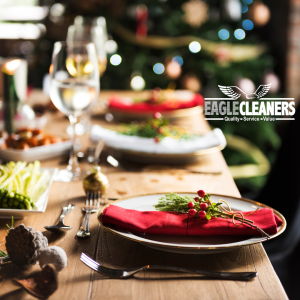Everyone has been taught a home stain removal remedy or two by someone. There may be a grain of truth to many of these quick-fix solutions but sometimes the proposed method may do more damage than good or there may be a better way. Let’s separate the facts from the fiction.
Myth: In a pinch, apply club soda to a stain. It is a great first aid remedy.
Reality: In some instances club soda will remove a clear, colorless, waterbased stain, but so will regular cool water. While club soda may be effective in removing water-based stains such as red wine or ketchup, it will not remove greasy, oily stains such as mayonnaise, butter or gravy because it does not possess grease-dissolving properties. Furthermore, applying club soda to an oil-based stain could create a more complex problem and diminish the chance of full stain removal. When applying club soda to a water-based stain, both the club soda and the stain must be flushed out completely right away. Otherwise a residue surrounded by a water ring will remain that could result in a permanent stain when dry.
Myth: To remove a scorch mark from an iron, rub the scorched area with a piece of raw onion for a short time, soak it in cold water, and the scorch will fade.
Reality: Rubbing an onion on a scorch mark does not remove the stain. Light scorch will sometimes rinse out with just cold water. Heavier scorch marks require bleach. Since there has probably been some fabric damage if the scorch is severe, it would be best to try three percent hydrogen peroxide instead of a chlorine bleach. If the damage has gone beyond scorching and has burned the fabric, it has been permanently damaged.
Myth: Applying saliva will help remove milk stains, blood stains, and other types of food stains from clothes.
Reality: Although unpalatable, saliva contains enzymes that help break up some stains through a digestive process – just as the saliva in your mouth begins to digest food. For obvious sanitary reasons, however, there are more preferred methods of stain removal, such as an enzyme presoak, which can be purchased at grocery stores, or the digesters we use in professional stain removal.
Myth: For ink stains from a ballpoint pen, apply hair spray and water.
Reality: Hairspray and water can indeed remove ballpoint ink, but you may be trading one problem for another. That’s because hairspray could contain alcohol and oils such as resins and lanolin. The alcohol in the hairspray can cause color damage, especially on silk; likewise, oils and other ingredients could lead to additional stains. A more appropriate solution would be to apply drycleaning solvent to the stain (there are many over-the-counter solvent-based products available for purchase). Blot the stain until all the bleeding stops, moving the stained area as the towel absorbs the ink. If the stain remains treat it with a mild synthetic detergent and household ammonia.




